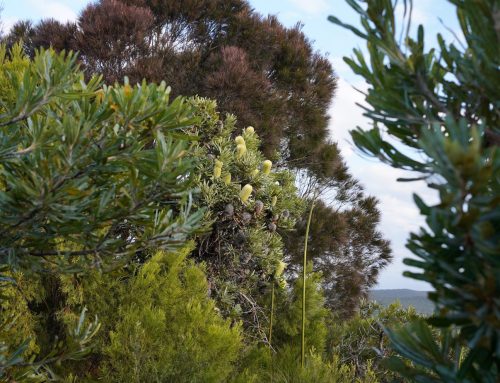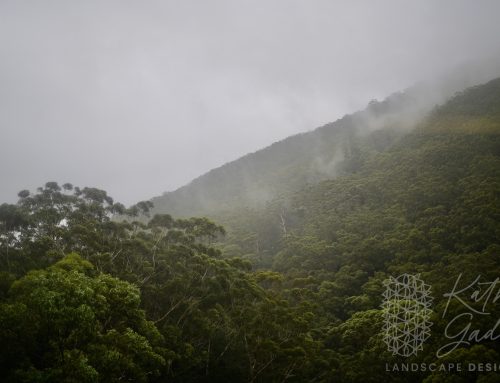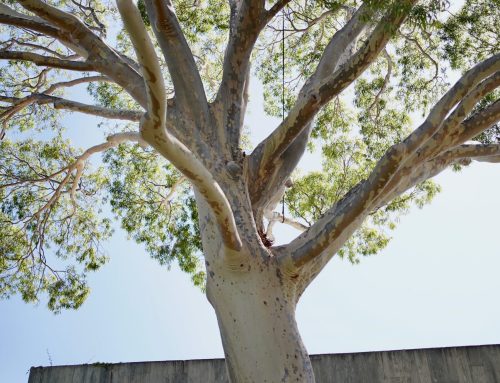What does it mean to say a garden has “good bones”? this is of course a compliment meaning the space has an underlying structure which is “working”, all the necessary elements are in place to still have a garden which feels harmonious and in balance.
“A garden with good form, shape and line is often referred to as a garden with “good bones’. Similar to the strength and support provided by the bones in our bodies, a gardens bones provide a year-round solid and sturdy framework for the entire garden.”
Rebecca Sweet
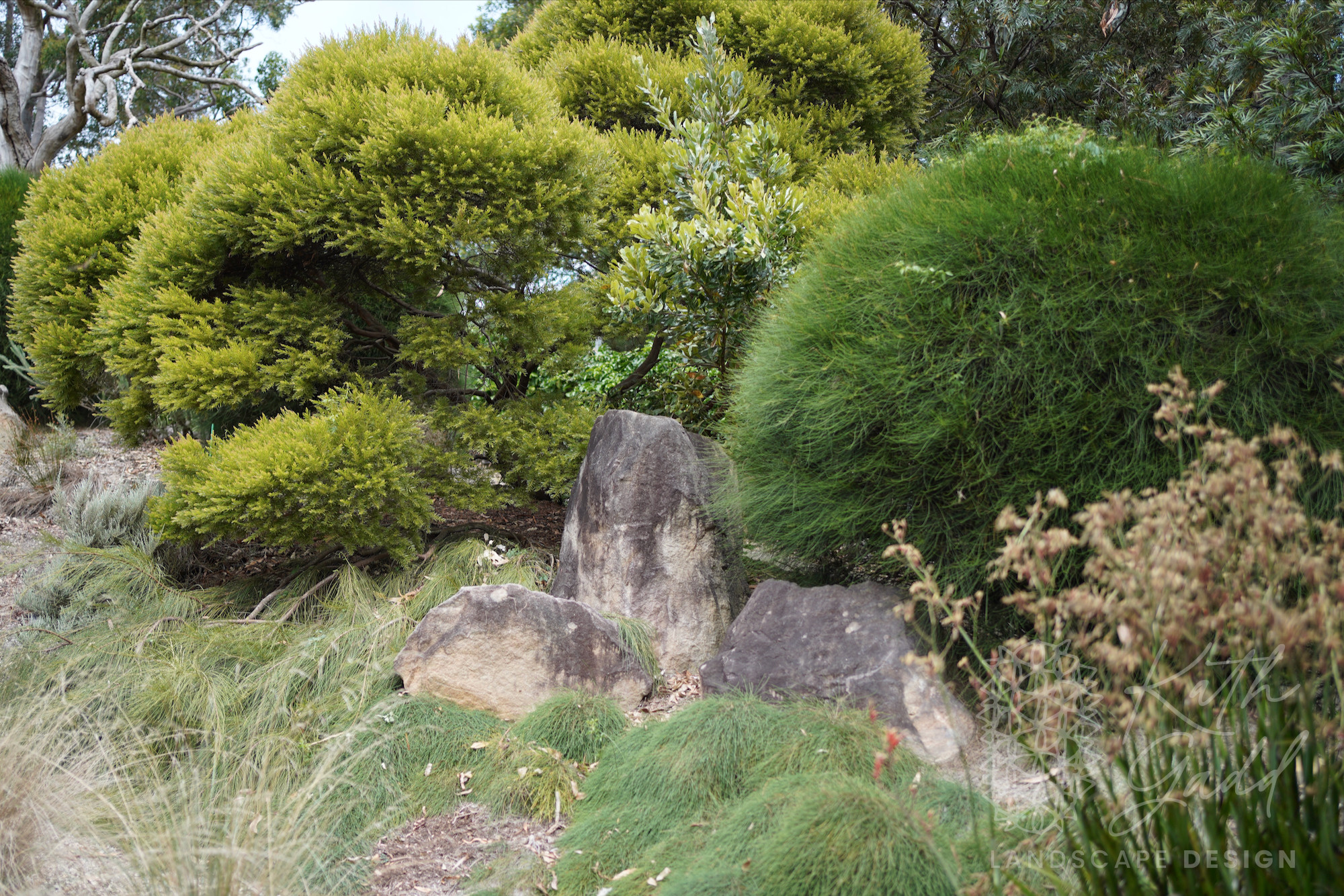
This garden in Bundeena is over 10 years old and is now asking for some careful thought in a couple of spots. The basic ‘Bones’ of the garden are strong and some plants are just hitting their stride – as the structure of the garden is still in place we will just be replacing some of the shorter lived plants like the ground covers and grasses.
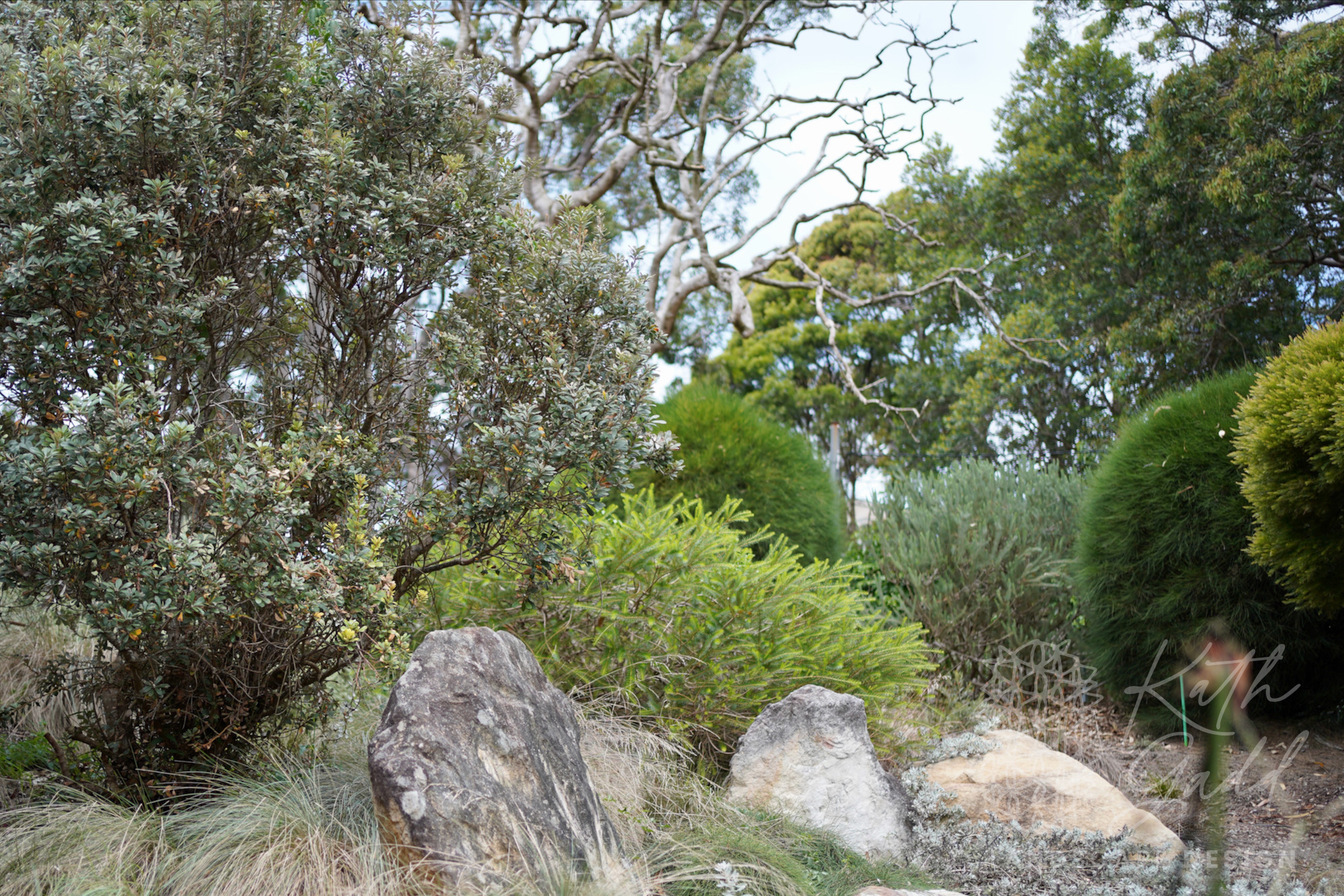
An important role of the plants in any garden is that of adding “mass” a well balanced garden will feel harmonious and in balance, due largely to the play between ‘mass and void’.
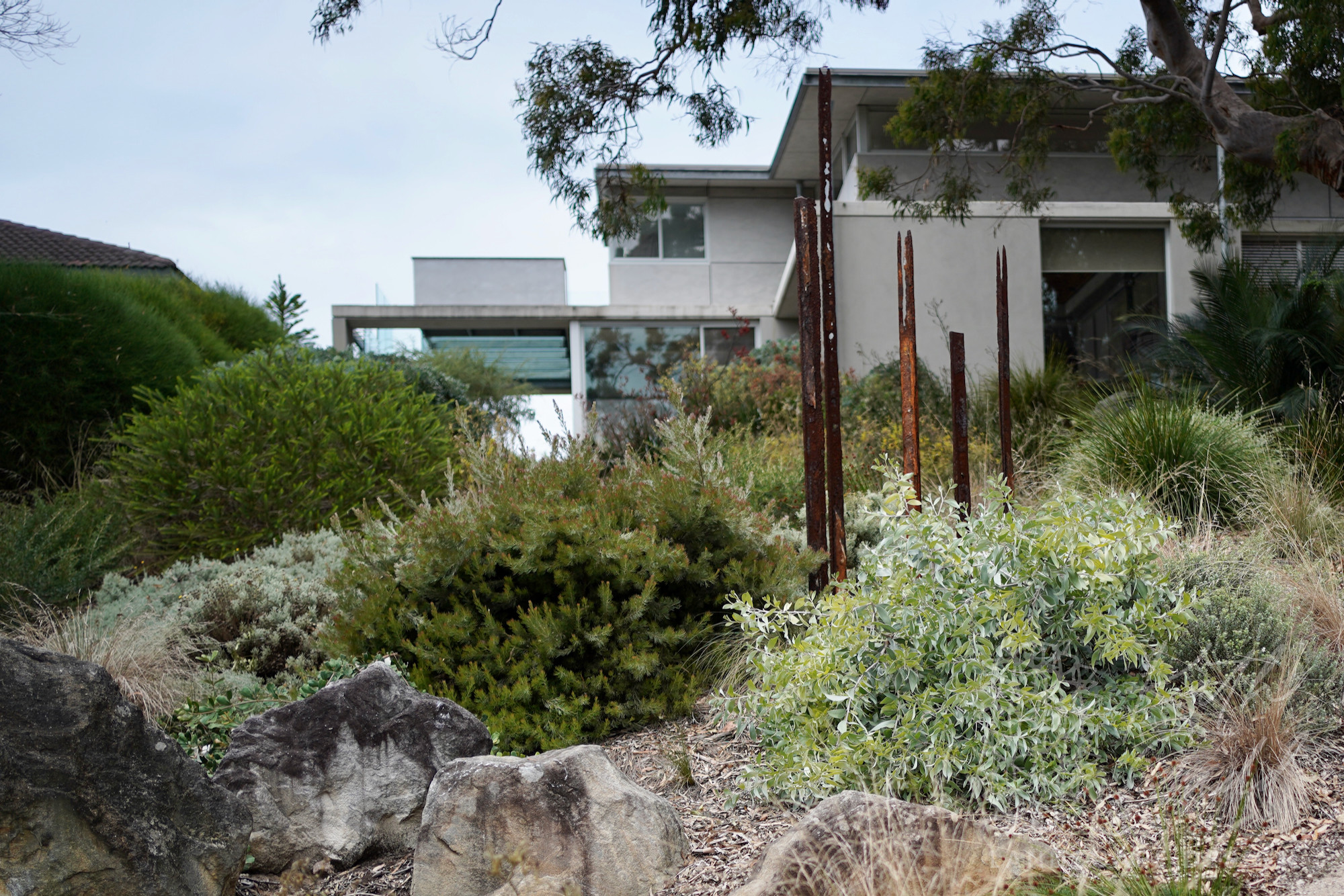
The trees, large and medium shrubs create mass, and in the case of this garden so too do the large sandstone boulders. The voids are created by the pathways, driveway and low ground covers and shrubs.
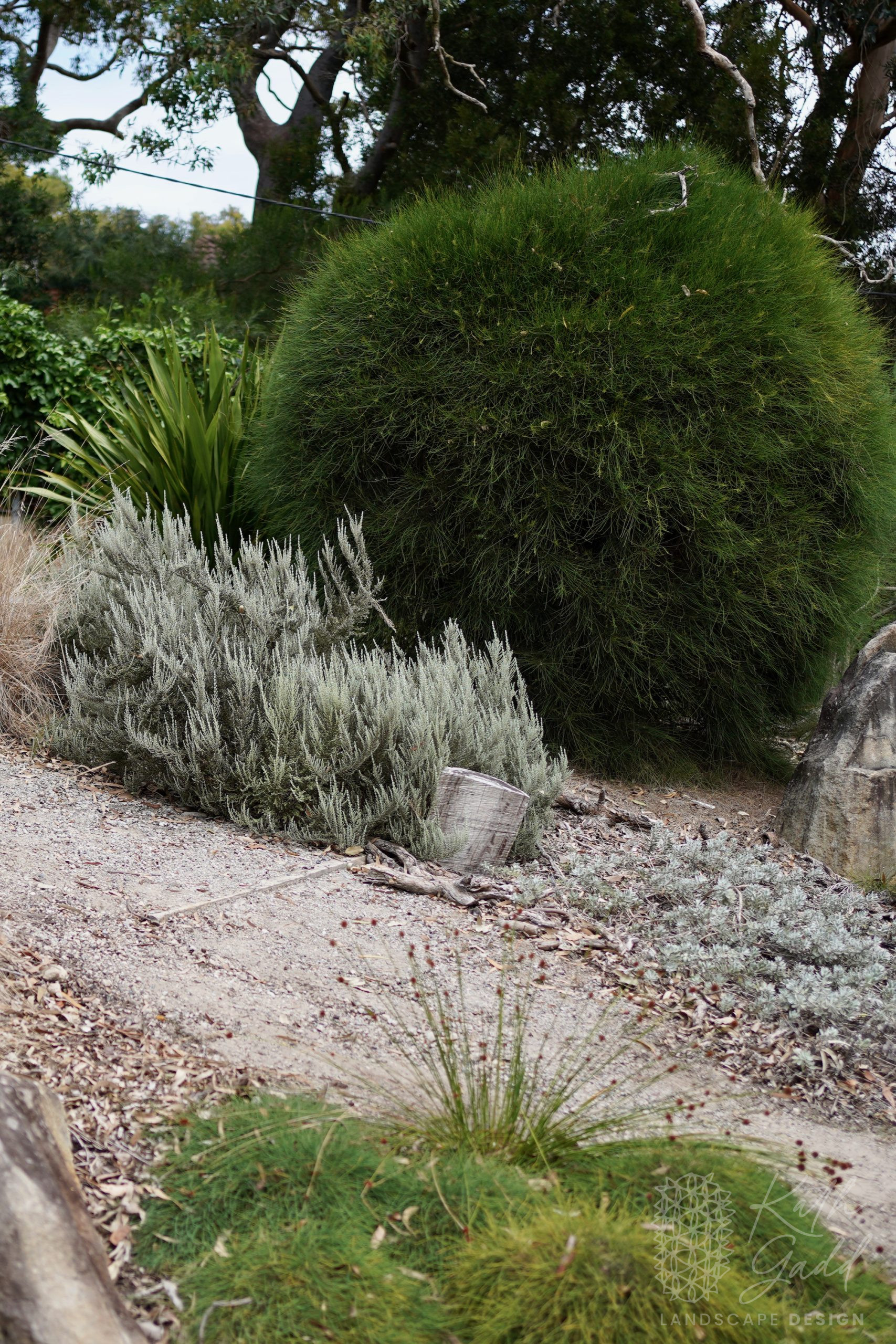
The use of Casuarina ‘Green Wave’ in this garden as a backdrop plant is crucial, they play an important role in providing a barrier and screen but they also offer a sense of seclusion and privacy.
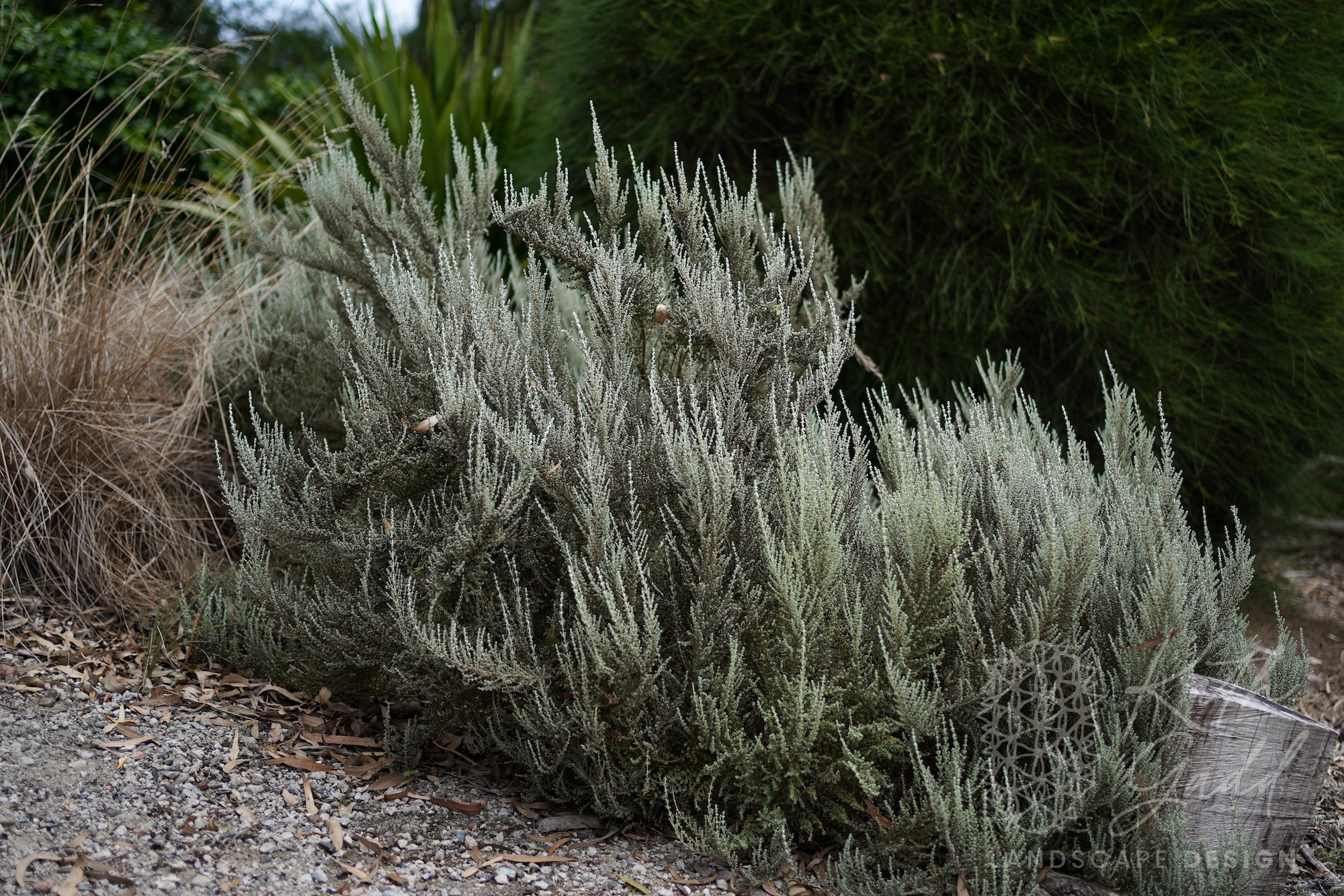
Another important shrub in this garden is the silver leaved Maireana oppositifolia. Although by no means is this a particularly large element in the planting, it does offer a well needed visual highlight and the upright stems contrast nicely with some of the softer forms.
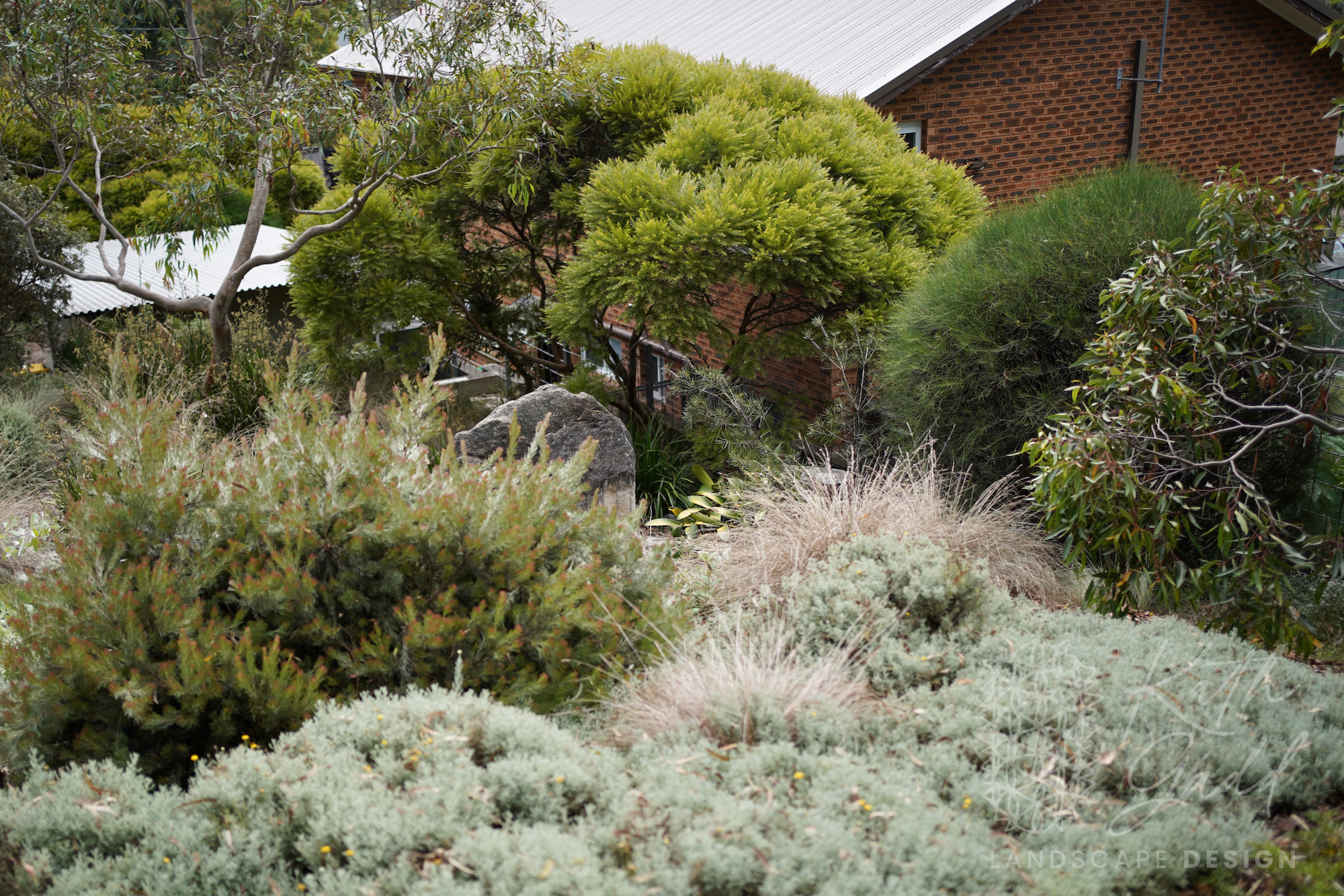
In the image above you can see the “bones” of the garden quite clearly, in the rear the Acacia fimbriata Dwarf and Casuarina ‘Green Wave’ are the backdrop, with the young Angophora costata bringing a vertical element.

Some of the “feature” plants have only just recently come into their own, this is the case of the Acacia baileyana Prostrate, which has finally gotten large enough to be shaped into a small tree.
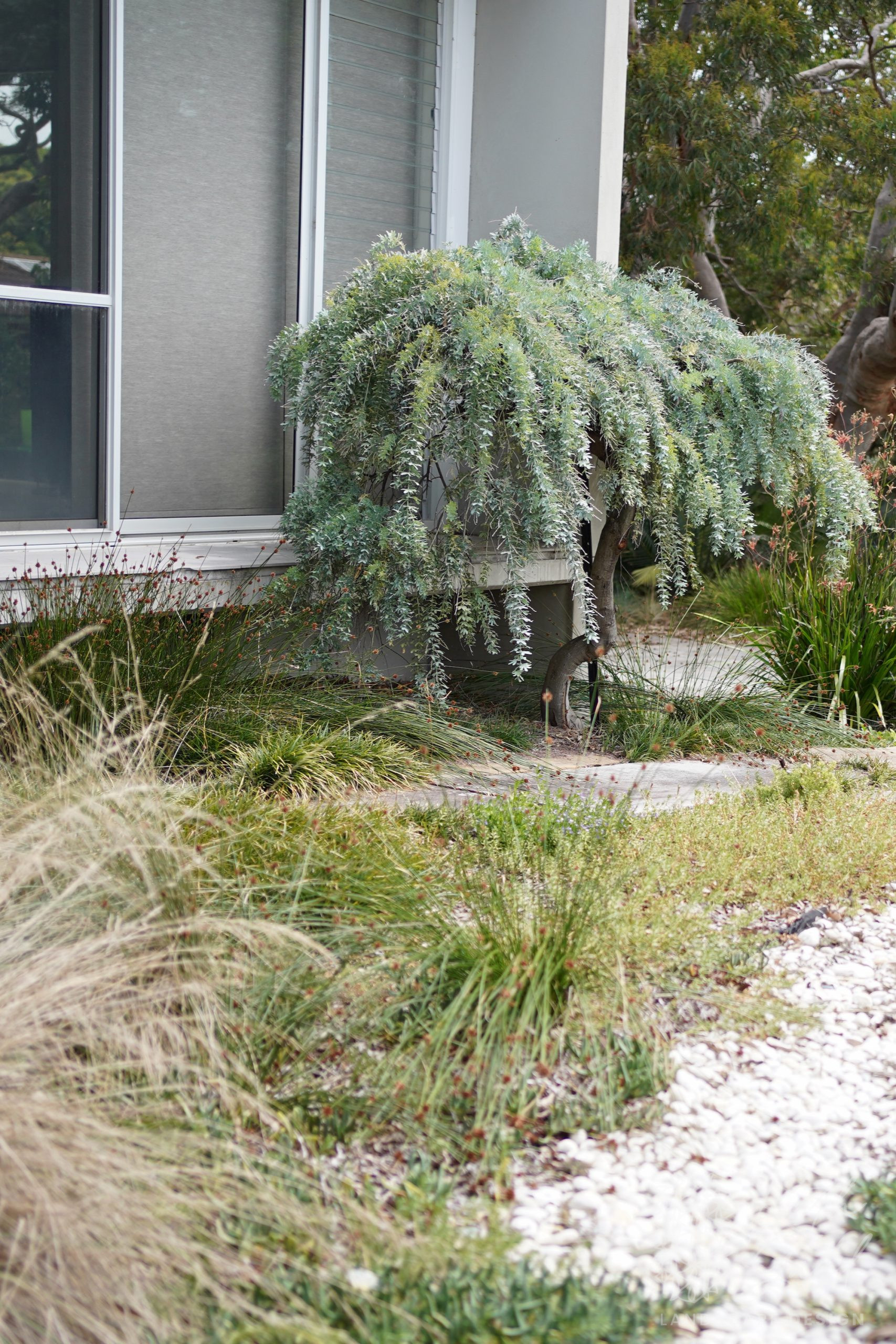
The majority of the new planting will happen up near the house, many plants here have struggled with the exposed position. The re-introduction of swathes of native grasses and some very low carpeting ground covers will help this part of the garden be reinvigorated.



